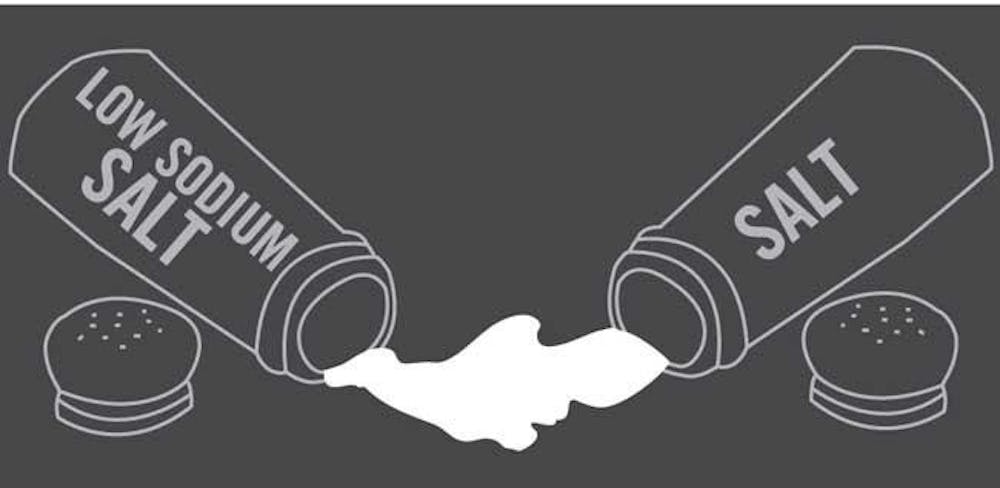Question: What is low-sodium salt?
Just to make sure we’re all on the same page, we need to define “salt.”
Salt, in chemical terms, is any ionic compound. An ion is a molecule that carries a charge. In the case of table salt, sodium chloride, the sodium has a positive charge, and the chloride has a negative charge.
Because we all know that opposites attract, it makes sense that the negative ion and the positive ion stick together. This forms the white crystalline compound familiar to us as just plain salt.
So a salt can be something other than sodium chloride. In the case of low-sodium salt, it’s usually potassium chloride. Potassium is sodium’s downstairs neighbor on the periodic table, which means that it has many of the same chemical properties. But our bodies can easily tell the difference between the two.
Especially our taste buds. I could only find one type of low-sodium salt (Nu-Salt) in local stores, and it tastes, er, different from regular salt. Unfortunately, I tried a big fingerful when I only had water on hand. Something stronger to wash it down with would have been preferable. Like a large slice of Limburger cheese.
So why would someone purposefully put this stuff in his or her mouth?
Because too much sodium isn’t good for you, said Bobbie Saccone, registered dietitian and nutrition counselor at the IU Health Center.
“The Dietary Guidelines for All Americans recommends that we keep our daily sodium consumption down to 2,300 milligrams, equivalent to one teaspoon of salt,” she said in an e-mail.
This is because certain conditions such as high blood pressure, also known as hypertension, are aggravated by a high sodium intake.
“A quarter of people in the developed world have hypertension,” said Bruce Martin, professor in the medical sciences program at IU. “It’s a big risk factor for heart disease and stroke.”
Our kidneys regulate sodium levels in our bodies, Martin said. If we have too much, our brain sends a signal to the kidneys to let some go, and we pee it out.
But if this regulation is faulty, our bodies have to find another way to lower the sodium concentration in our blood. It does this by letting more water pass into the bloodstream via osmosis.
So the overall sodium concentration – the amount of sodium per unit volume – decreases. But that also means the overall blood volume, the physical amount of blood running through our veins, increases.
This increase in blood volume puts strain on both the veins and the heart and can cause other health problems in the future, Martin said.
In layman’s terms, too much sodium is bad. But we do have to have some, as it’s necessary for various biological processes that keep us alive.
Potassium is also needed for our continued survival, and most people don’t get the recommended amount. So maybe that potassium chloride salt substitute isn’t such a bad thing, if you can deal with the interesting flavor.
However, as with all things dietary in nature, you should consult your doctor before switching to a salt substitute. Quoth the back of the shaker, “For normal healthy people.” You can take “normal” with a grain of salt (sorry), but changes in potassium intake can have an effect on people with heart disease or diabetes.
And the best way to keep your sodium levels healthy?
Eat well and exercise. Yes, you already knew that.
Ask Suzie Q. Scientist is written by chemistry doctoral student Leigh Boerner. Have a science question? Send it to AskSuzieQ AT gmail DOT com.
Salty substitute
What is low-sodium salt?

Get stories like this in your inbox
Subscribe





